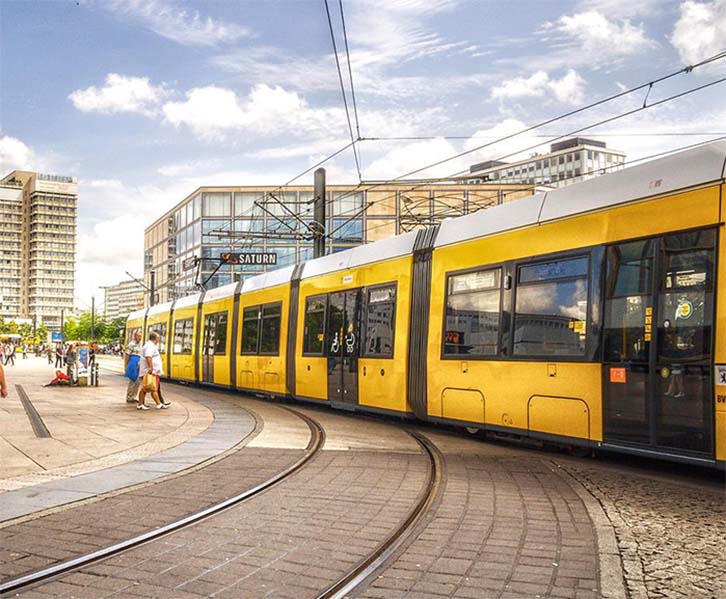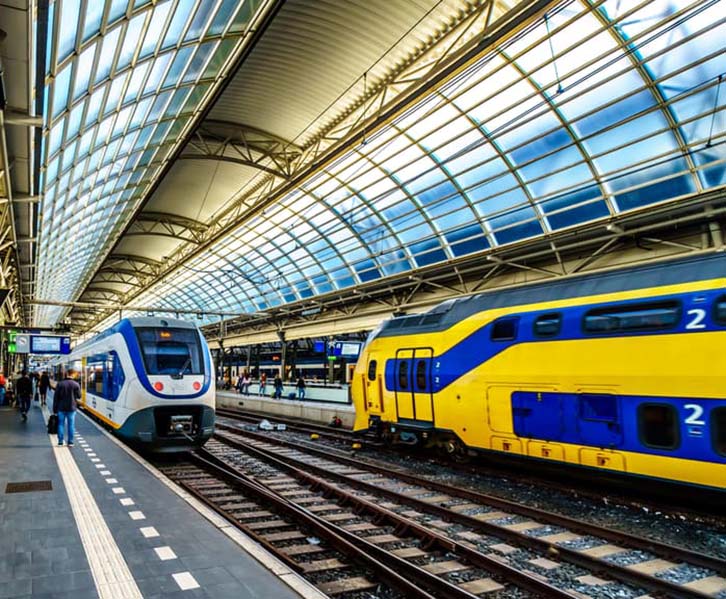Berlin is a sprawling metropolis with a complex network of public transportation options that are both efficient and affordable. As someone who has navigated the city extensively, I can confidently say that getting around Berlin is straightforward once you understand the system. This guide will provide you with detailed information on the various modes of public transportation, ticketing options, tips for saving time and money, and how to make the most of your journey across this vibrant city.
Introduction to Berlin’s Public Transportation System
Berlin’s public transportation network is operated by the BVG (Berliner Verkehrsbetriebe) and includes a combination of buses, trams, the U-Bahn (underground metro), the S-Bahn (urban railway), and ferries. The network is extensive, covering nearly every corner of the city, making it easy to get from one point to another.
The U-Bahn (Underground Metro)
The U-Bahn is the backbone of Berlin’s public transit system. It consists of 10 lines (U1 to U9, with U55 now part of the U5 line) that crisscross the city, with most lines operating from 4:00 AM to around 1:00 AM on weekdays. On weekends, the U-Bahn runs 24 hours a day, making it a convenient option for night owls or those who want to explore Berlin’s nightlife.
Advantages:
- Speed: The U-Bahn is the fastest way to travel across the city, especially during rush hours when roads can be congested.
- Frequency: Trains run every 3-5 minutes during peak times and every 5-10 minutes during off-peak hours.
- Coverage: Most tourist attractions, shopping areas, and popular neighborhoods are accessible via the U-Bahn.
Tip: The U-Bahn stations are easy to identify by the large “U” signs outside. Inside the stations, detailed maps and signs in both German and English make it easy to navigate.
The S-Bahn (Urban Railway)
The S-Bahn is another vital part of Berlin’s transit network, consisting of 15 lines that mainly serve the outer districts and suburbs, while also connecting to the city center. The S-Bahn runs above ground and is a great option for longer trips or for enjoying scenic views of Berlin.
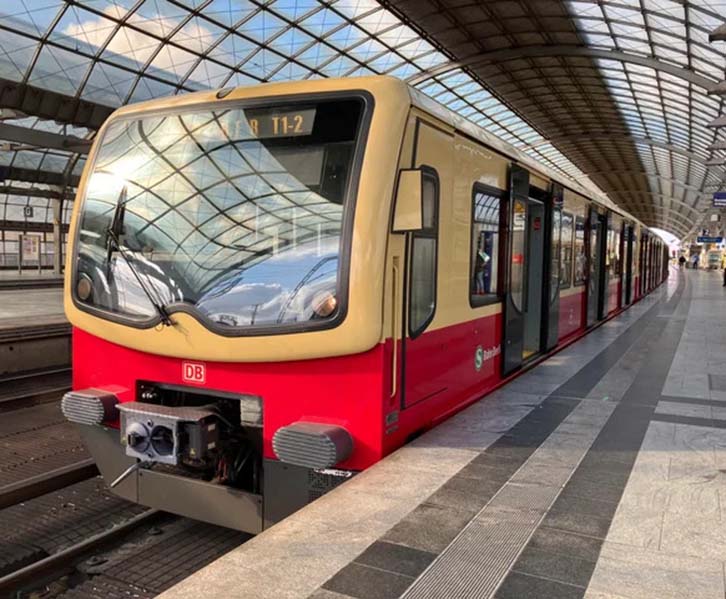
Advantages:
- Extensive Coverage: The S-Bahn reaches areas not covered by the U-Bahn, including the outer districts and surrounding areas of Brandenburg.
- Connections: Many S-Bahn stations intersect with U-Bahn stations, allowing easy transfers between the two systems.
- Punctuality: The S-Bahn is known for its reliability and punctuality, making it a popular choice for daily commuters.
Tip: S-Bahn lines are numbered with an “S” followed by a number (e.g., S1, S2). The S-Bahn network also includes the famous “Ringbahn” (S41/S42), which circles the city and provides easy access to various neighborhoods.
Trams (Straßenbahn)
Berlin’s tram network primarily serves the eastern part of the city, with 22 lines that are especially useful in areas where the U-Bahn or S-Bahn are less prevalent. Trams are a comfortable and scenic way to travel, offering a more relaxed pace compared to the metro systems.
Advantages:
- Accessibility: Trams often stop closer to street level attractions, shops, and residential areas.
- Scenic Routes: Traveling by tram offers a great way to see the city from a different perspective.
- Frequent Service: Trams run frequently, especially during peak hours, making them a reliable option for shorter journeys.
Tip: Look for the yellow tram signs at stops. Trams also share some routes with buses, so make sure you board the correct vehicle.
Buses
Berlin’s bus network complements the U-Bahn, S-Bahn, and tram systems, with routes covering areas that are not directly accessible by other modes of transport. There are two types of buses in Berlin: regular buses (numbered 100-399) and night buses (N1-N97).
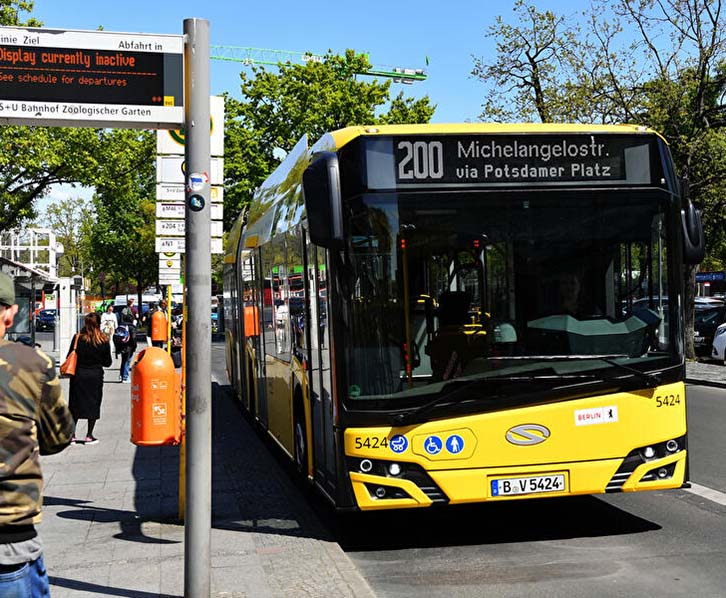
Advantages:
- Comprehensive Coverage: Buses reach parts of the city that other modes of transportation do not, including residential neighborhoods and more remote areas.
- Night Service: Night buses operate throughout the city when other services are reduced, typically from midnight until the early morning.
- Tourist Routes: Bus lines 100 and 200 are particularly popular with tourists, as they pass by many of Berlin’s key attractions, including the Reichstag, Brandenburg Gate, and Alexanderplatz.
Tip: Buses are equipped with digital displays and announcements in both German and English, making it easy to follow your route. Always board the bus from the front door and show your ticket to the driver if asked.
Ferries
Berlin’s ferry services, though less commonly used by tourists, offer a unique way to explore the city, especially during the warmer months. The BVG operates six ferry lines on the city’s rivers and lakes, providing scenic routes and connecting various districts.
Advantages:
- Scenic Journeys: Ferries offer a leisurely and picturesque way to see Berlin’s waterways.
- Connectivity: Ferries connect areas that might otherwise require long detours by land.
Tip: Ferries are included in the regular public transport tickets, making them a cost-effective way to enjoy a boat ride.
Navigating Tickets and Fares
Berlin’s public transportation system operates on a unified fare system, meaning your ticket is valid on the U-Bahn, S-Bahn, trams, buses, and even ferries within the zones you purchase it for. Understanding the fare zones and ticket options is key to getting the most value out of your travels.
Fare Zones
Berlin is divided into three fare zones:
- Zone A: Covers the city center, including the area inside the S-Bahn Ring (Ringbahn).
- Zone B: Encompasses the area outside the S-Bahn Ring to the city limits.
- Zone C: Extends to the surrounding areas of Berlin, including Potsdam and Schönefeld Airport (BER).
Tip: Most visitors will only need an AB ticket, which covers the majority of tourist attractions and central neighborhoods. If you plan to visit Potsdam or travel to BER Airport, you’ll need an ABC ticket.
Ticket Types
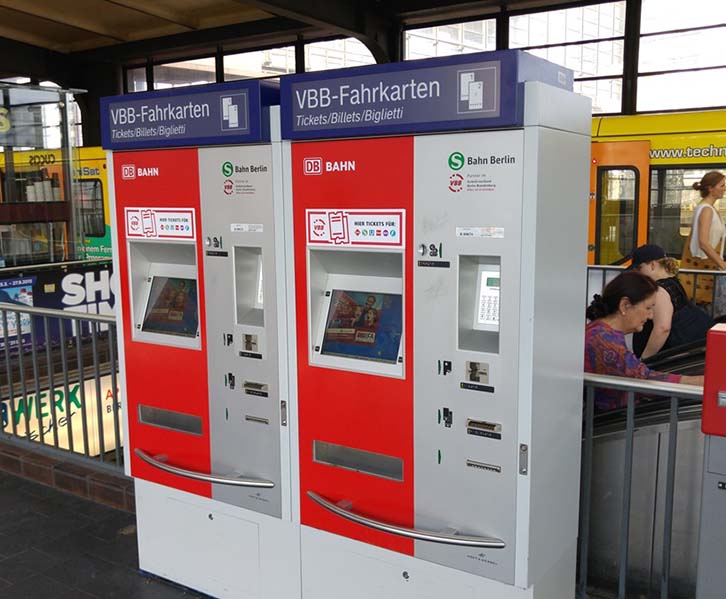
Single Ticket (Einzelfahrschein):
- Valid for one journey within the selected zones (AB, BC, or ABC).
- Allows transfers between modes of transport, but you cannot return to your starting point.
- Duration: Valid for 2 hours.
Day Ticket (Tageskarte):
- Offers unlimited travel within the selected zones for one day (until 3:00 AM the following day).
- Ideal for tourists who plan to explore multiple areas.
Short Trip Ticket (Kurzstrecke):
- Valid for short trips: up to 3 stops on the U-Bahn or S-Bahn, or 6 stops on buses or trams.
- Does not allow transfers.
7-Day Ticket (7-Tage-Karte):
- Unlimited travel for 7 consecutive days within the selected zones.
- A great option if you’re staying in Berlin for a week.
Group Tickets (Gruppenticket):
- Available for groups of up to 5 people, offering significant savings for families or groups traveling together.
Tip: Children under 6 years old travel for free, and discounted tickets are available for children aged 6 to 14. Make sure to validate your ticket at the yellow or red machines located at station entrances or on buses/trams before starting your journey.
Purchasing Tickets
Tickets can be purchased at:
- Ticket Machines: Available at all U-Bahn and S-Bahn stations, with instructions in multiple languages.
- BVG App: Allows you to buy digital tickets directly on your smartphone, which is convenient and eco-friendly.
- BVG Service Points: Located at major stations, these counters offer assistance and ticket sales.
- Bus/Tram Drivers: Single tickets can also be purchased directly from drivers, though it’s best to have small change ready.
Tip: The BVG app is highly recommended for its user-friendly interface and ability to check real-time schedules and plan routes.
Tips for Efficient Travel
Traveling efficiently in Berlin isn’t just about knowing the public transit options—it’s also about understanding the local nuances and making the most of the system.
Timing Your Trips
- Rush Hours: Berlin’s rush hours are typically between 7:00 AM and 9:00 AM, and again from 4:00 PM to 6:00 PM. During these times, public transit can be crowded, especially on popular routes.
- Off-Peak Hours: If you prefer a more relaxed journey, try to travel outside of these peak times.
- Night Travel: The U-Bahn runs 24 hours on weekends, and night buses (N-lines) cover routes when regular services are reduced. S-Bahn lines also have extended hours on weekends.
Tip: If you’re out late, the night buses and trams are reliable alternatives to taxis, and the BVG app will help you find the best routes.
Planning Your Route
- Use the BVG App: This app is invaluable for planning routes, checking schedules, and purchasing tickets. It also provides updates on any service disruptions.
- Google Maps: A reliable tool for navigating Berlin’s public transit, with real-time updates on train and bus schedules.
- Paper Maps: Available at BVG service points and some hotels, these can be handy for getting an overview of the city’s transit network.
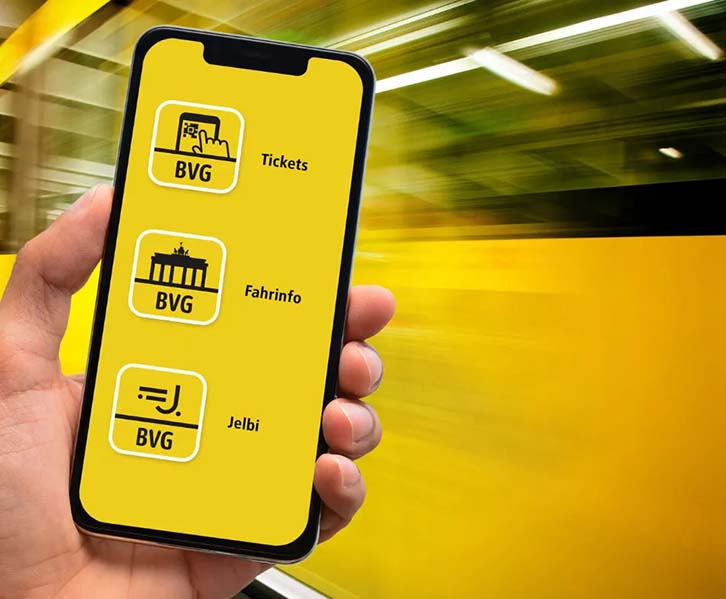
Tip: Always check the last train or bus times, especially if you’re planning to stay out late. The BVG app will notify you of the last available services.
Saving Time and Money
- Buy a Day Ticket: If you’re planning to use public transport multiple times in one day, a day ticket offers the best value.
- Explore by Bike: Berlin is a bike-friendly city, and many areas are quicker to navigate by bike than by public transit. Consider renting a bike for short trips.
- Avoid the Car: Traffic can be heavy, and parking is limited and expensive in the city center. Public transit or biking is often faster and more convenient.
Tip: If you’re staying for a week or more, consider a 7-day ticket or even a monthly pass, which can offer significant savings.
Safety and Etiquette
- Safety: Berlin’s public transit is generally safe, but it’s always wise to stay aware of your surroundings, especially late at night.
- Etiquette: Stand on the right side of escalators to allow others to pass on the left, and always give up your seat to elderly or disabled passengers. Keep your voice low when talking, as many Berliners appreciate a quiet ride.
Tip: If you’re traveling with luggage, try to avoid peak hours, and be mindful of taking up extra space on crowded trains or buses.
Exploring Beyond the City Center
While Berlin’s city center is packed with iconic attractions, don’t miss the opportunity to explore its surrounding neighborhoods and nearby cities.
Visiting Potsdam
- How to Get There: Take the S7 S-Bahn line from Berlin to Potsdam Hauptbahnhof, which takes about 40 minutes. You’ll need an ABC ticket.
- What to See: Potsdam is famous for its palaces and gardens, including Sanssouci Palace and the beautiful Neuer Garten.
- Tips: Potsdam is perfect for a day trip. Start early to explore the parks and palaces, and don’t forget to check train schedules for your return journey.
Exploring Berlin’s Neighborhoods
- Kreuzberg: Known for its alternative culture, vibrant street art, and diverse food scene, Kreuzberg is easily accessible by U1, U6, and U8.
- Prenzlauer Berg: A more laid-back neighborhood, popular with families and known for its charming cafés and boutique shops. Take the U2 to Eberswalder Straße or the M10 tram.
- Charlottenburg: Home to Charlottenburg Palace and upscale shopping on Kurfürstendamm, accessible via the U7, U2, or S-Bahn.
Tip: Each neighborhood has its own unique vibe, so take the time to explore different areas and see Berlin from various perspectives.
Navigating Berlin’s public transportation system is a breeze once you’re familiar with the different modes of transit, ticketing options, and local tips. Whether you’re zipping across the city on the U-Bahn, enjoying a scenic tram ride, or taking a ferry across the Spree River, Berlin’s public transport system is designed to help you explore the city efficiently and affordably.
